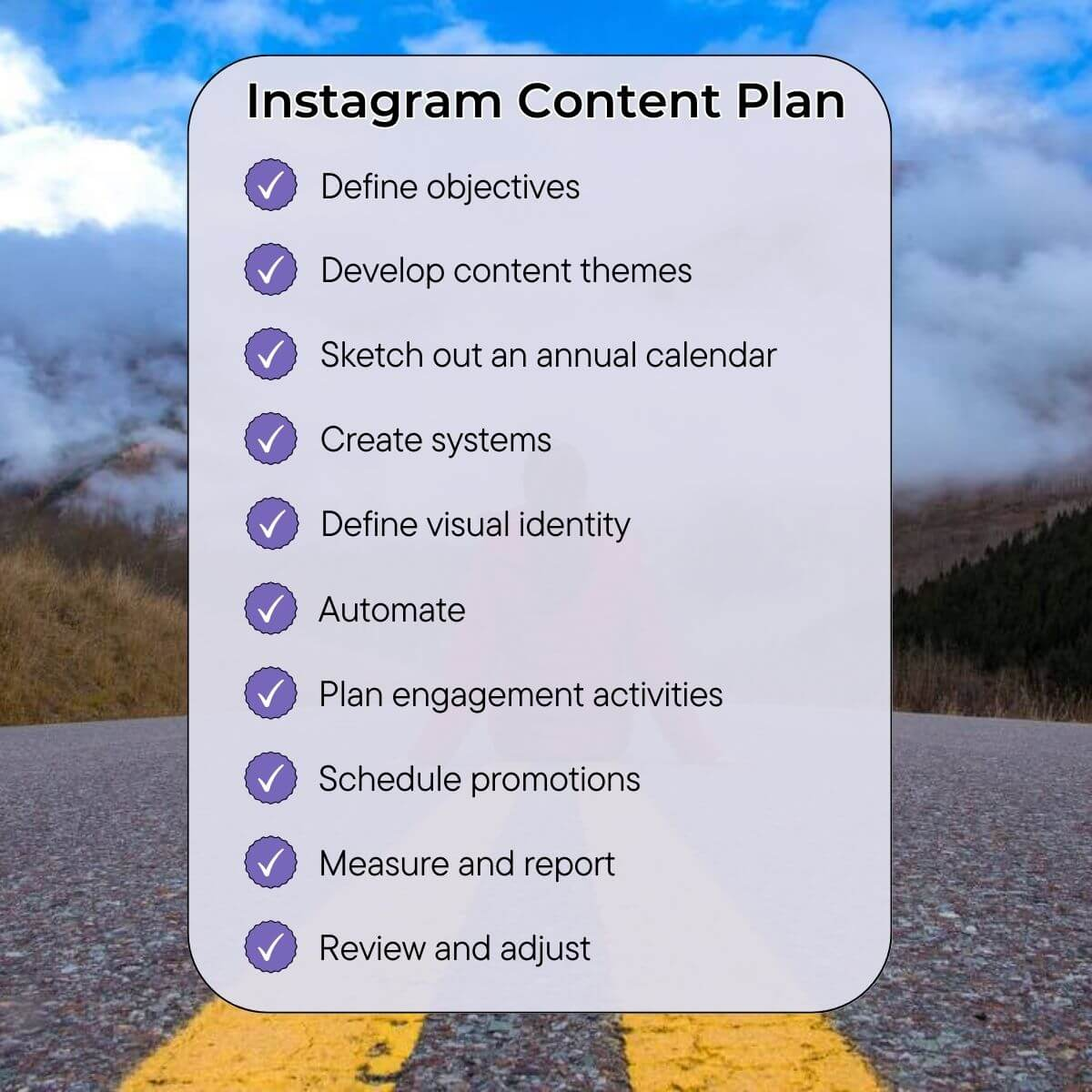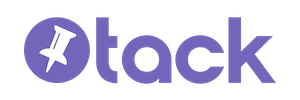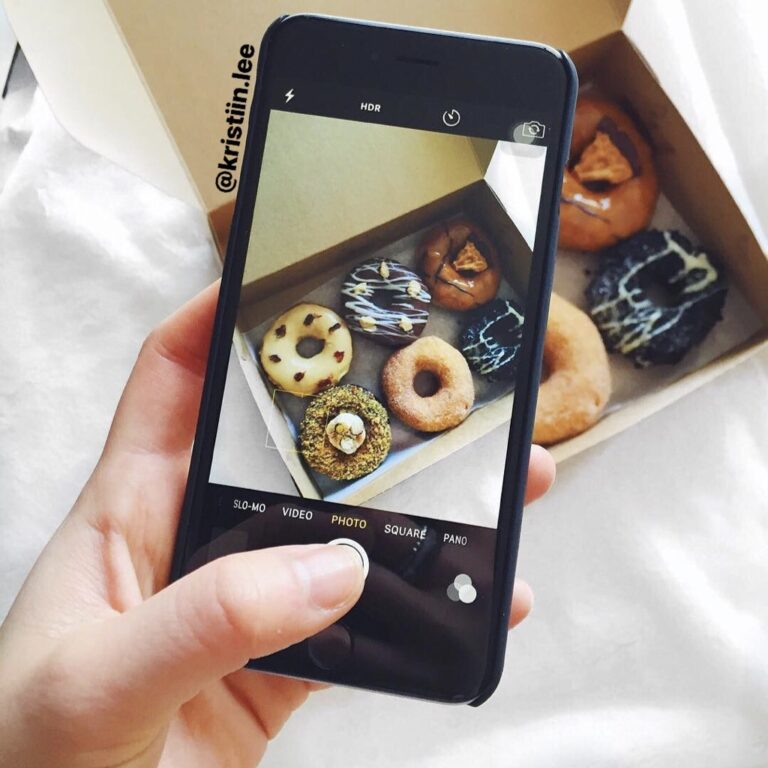10 Steps to Create an Epic Instagram Content Plan
Posting on Instagram ‘when you feel like it’ is for amateurs and individuals. Brands, businesses, and agencies need a plan.
A plan will give you the power and confidence to post, review, and iterate on your Instagram content strategy until you are getting the best results possible from the platform. A little planning upfront can improve your social media engagement, grow your follower count, and bring in business for months and years to come.
Creating an Instagram content plan is a key part of a social media strategy that will help with streamlining your efforts, enhancing your social media presence, and achieving your marketing and business goals. In this post we’re going to discuss the nuances of an Instagram content plan and detail how you can create your own with a step-by-step guide.
Let’s get started.
What is an Instagram content plan?
An Instagram content plan is a strategic document that specifies the type of content you will to post on your Instagram account(s) over a period of time. It’s a crucial aspect of social media marketing that helps you maintain a consistent and cohesive presence on the platform while measuring your progress against your marketing goals.
Whether you’re an individual, a brand, or a business, creating and executing a plan for your Instagram content is doing to get you far better results than posting randomly.
Let’s quickly zoom in on some of the benefits of an Instagram content plan.
Why is an Instagram content plan important?
A well-defined Instagram content plan can improve the engagement with your content, follower growth, and overall brand identity. This applies to individual creators, brands, and any type of business looking to growth their social media presence.
Taking the time to articulate a plan offers marketers several benefits:
Achieving your goals: A content plan helps you align your Instagram efforts with broader marketing objectives. Whether you’re aiming to drive sales, increase website traffic, or grow your follower count, a plan ensures your content supports these goals.
Strategic messaging: An Instagram content plan enables you to align your content with your marketing goals and messages. You can strategically convey information, promotions, or campaigns to your audience.
Brand identity: A content plan helps maintain a consistent visual style, tone, and messaging across your social media posts. This strengthens your brand identity and makes your profile more recognizable to your audience.
Diverse content: By planning your content in advance, you can ensure a diverse mix of content types, such as photos and videos, stories, and reels. This keeps your Instagram feed engaging and caters to different audience preferences.
Audience targeting: A content plan helps you cater to your target audience’s preferences and interests. This leads to higher engagement rates and better interaction with your content.
Efficiency: With a content plan in place, you can streamline your content creation process. Planning ahead allows you to batch-create content, saving you time and reducing last-minute rushes.
Consistency: Perhaps most importantly, following a content plan ensures that you consistently post content on your Instagram page. Consistency is vital for keeping your audience engaged and informed about your brand, products, or services.
Without planning content, you’ll be scrambling each day trying to figure out what to post without any real direction or purpose. Not only will this negatively affect your results on the Instagram feed, it will also probably start to stress you out at some point.
Here’s how you can create your own Instagram content plan so you can stay focused and get a clear picture of your results with the platform.
How to create your own Instagram content plan (step by step)
Ready to get serious about your Instagram content strategy? This section will take you step-by-step through the entire planning process. This process works whether you are an ecommerce brand, local services, or an agency.
Step 1. Define your objectives
What do you want to achieve with your Instagram presence? Be specific and don’t be afraid to set multiple objectives.
For instance, an ecommerce store might set the following goals for its Instagram profile:
Increase channel sales from Instagram by 20% in 6 months
Increase Instagram follower count by 50% in 9 months
Post on Instagram 100 times in a year
Collaborate with 12 creators over a year
Goals are directional—they give you something to aim for, but also something to measure against.
Pro tip: Make sure you have goals that cover the business side of things (such as revenue, traffic) in addition to the social media side of things (followers, weekly post volumeetc.).
Step 2. Develop content themes and topics
Brainstorm compelling content themes or categories that resonate with your audience and align with your brand. These could include product showcases, behind the scenes content, customer stories, or industry insights.
You want your themes to be broad enough that you won’t run out of ideas anytime soon, but specific enough that their category can actually inspire some post ideas.
Pro tip: Don’t be afraid to look at examples from other brands outside your industry. Every brand will have themes like “company news” and “product showcases,” but the ones achieving real success on Instagram will pair that with more audience-centric themes that are aspirational, interesting, and educational.
Step 3. Sketch out an annual content calendar
Using the themes you’ve identified, start outlining what your year will look like in terms of content. This is not the time to write post copy or assign publication dates; what you’re trying to do is this step is get a sense of the resources you’ll need to prepare to complete your plan.
Let’s say ‘behind the scenes’ is one of your content themes. Make a decision on how often you’ll be posting content from that theme, i.e. once per week, twice per month, etc.
Experienced social media marketers know what you need variety in your feed, so play around with your themes and topics to see what that might actually look like over an extended period of time. You can always adjust later.
Pro tip: For every promotional post, you’ll want to post a few pieces of content that aren’t actively selling anything to your audience. This keeps your Instagram page from looking like a spam machine.
Step 4. Create systems for content generation
At this point you can actually start to see your Instagram content plan starting to take shape—the only issue is that it’s still just a plan in a spreadsheet somewhere. In order to bring it to life you’ll need to develop systems to generate enough content to fuel the strategy.
The reason you want a “system” for creating content is so that you can actually build a library of images and video that you can pick and choose at your leisure to fulfill your strategy, rather than scrambling last-minute to try and find a stock photo that sort of fits. It may be easy for you to obtain product shots, but what about lifestyle clips and user-generated content (UGC)?
For example, let’s say one of your objectives is to post at lest one piece of user generated content every week. Where to you plan to obtain that UGC?
One way is to use a system like Tack. With Tack, you can see who is posting content featuring your brand. Every week, you can see what other people have been posting, then use the system to reach out and obtain permission to use their content.
In this way, you can easily create a system that generates tons of UGC to fuel that part of your content strategy so you don’t have to always use boring stock photos or create content yourself.
Pro tip: Collaborate with creators and other members of your team to help you generate more content than you need. If you’re exploring some influencer marketing, they may also give you permission to use the content on your own channels. It’s much better to have multiple options and have the advantage of being able to choose the best one for your post.
Step 5. Define a visual identity
Your content themes will help you connect your larger marketing and business goals to your content, but the actual look and feel of your graphics and video is what will draw people to your Instagram posts.
Early on you’ll want to decide how you want to present your brand to your ideal target audience on Instagram.
Do you want your pictures to look high end? Vintage?
Will you use text overlays on your videos?
Will your captions tell a long story or read more like a one-liner?
Establish a visual identity to your content and stick with it. This will not only help your in-house photography/videography, but it will give you a filter that will help you select UGC that matches your brand.
Pro tip: Pick some of your favorite brands and scroll through their Instagram posts quickly; seriously, swipe your thumb rapidly. More than likely, you’ll notice the content ‘feels’ the same and has a consistent tone. That’s by design!

Step 6. Automate with technology
Nobody has time to sit around all day posting content, and luckily, we have the tools that allow us to plan ahead and create a posting schedule to publish our content when we see fit. Treat your Instagram calendar just like a schedule—establish posting patterns and stick with them.
With an automated scheduling tool, you can not only schedule posts and upload photos all at once, you can also get deep insights about your engagement that will help you optimize things like when to post, how often to post, and of course, a plan for your future posts.
Pro tip: By using a tool like Tack, you can save Instagram searches for branded hashtags (and more) so that when anyone posts with that tag, it will automatically flow into your inbox for review. Work smarter, not harder!
Step 7. Plan engagement activities
So far we’ve only discussed how and what to do with your own Instagram posts, but a well-rounded strategy includes outreach to other accounts. Think about it—if your goal is to increase impressions, engagement, and follower count, what better way to do that than actually get out in your audience’s feeds through the comments section?
Therefore, make sure to outline how you’ll engage with your audience. This includes setting aside time each day to respond to comments, share posts from others, direct messages, and interact with followers’ posts. Be authentic in your responses and you’ll receive more engagement and more followers in turn.
Pro tip: Engage with a mix of accounts with both large audiences and small. While commenting on larger accounts can get you more visibility, you’re more likely to get replies and reactions to your comments on smaller accounts.
Step 8. Schedule promotions
Discounts and promotions can have a powerful effect on your business, but they must be handled with care. Running too many promotions can have a few negative effects:
Your account will look like SPAM that only cares about milking your audience for money
Your brand will look cheap and you’ll start attracting discount seekers
Your promotions simply won’t work as well
The key to a solid Instagram campaign with a promotional strategy is balance. If you’ve earned the eyeballs of your audience with the first few steps, it’s great to mix in a promotion every once in a while to reward your loyal followers with a discount or special offer.
Pro tip: Plan a promotion no more than once every six to eight weeks.
Step 9. Measure and report
Once you’ve set your objectives in Step 1, you also need to measure and report on the key performance indicators (KPIs) you’ll use to track your success. Common metrics include likes, comments, shares, click-through rates, follower growth, and conversion rates.
Tools like Agorapulse can not only help you find insights in your data and create reports, you can also manage your Instagram content calendar with their publishing tools. By pairing these two tools, you can figure out what’s the best time to post and schedule content in those windows. There are many instagram marketing tools to help with measurement, but Agorapulse is simple to use and great for both small businesses, agencies, and brands alike.
Pro tip: Make sure the tool you use to measure your stats can also track Instagram Stories, which are a crucial part of a solid strategy.
Step 10. Review and adjust
Lastly, no content marketing campaign is ever fully ‘complete’ because part of the process is using your data to iterate and improve. Your data is the key to creating strategies that you know will work rather than throwing spaghetti at the wall to see what sticks.
Review your audience insights and other metrics. Compare engagement during promotional periods vs. without. Where was there a drop-off in social media KPIs? Did you post fewer times? Was there a spike in revenue? What kinds of posts got the most engagement?
Make a habit of running reports and looking for insights.
Pro tip: Create a set time (the end of the month, for example) when you will access analytics and review your progress. Do this consistently and not in an ad-hoc fashion.
Next steps
As you can see, you have a ton of work to do! But creating a seamless instagram content strategy can actually make your task much easier in the future.
You’ve probably realized by now that you will need a ton of media to fuel your Instagram Reels, Stories, carousel posts, and more. Shooting all of that content yourself isn’t always realistic and social media users naturally gravitate towards content from their own perspective.
Tack can help you scale your UGC program and build your UGC media library with systems that eliminate lots of the manual outreach you’d need otherwise. With Tack, you can get authentic content (for free!) that people are already creating about your brand. Many Instagram users are happy to share the rights to their content with you—all you have to do is ask!
Connect your Instagram profile and start building a media library of authentic content from Instagram. Get started for free!





